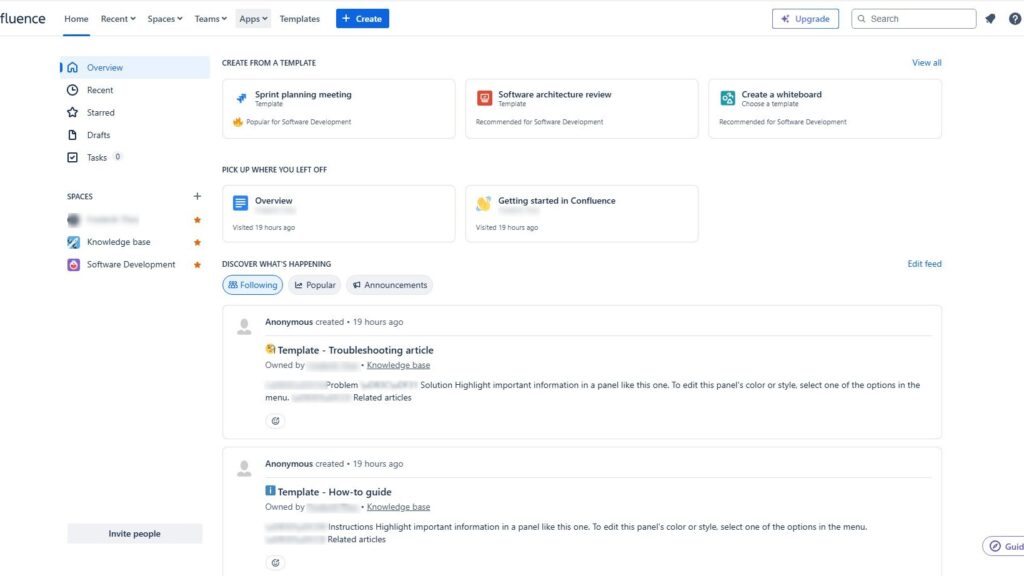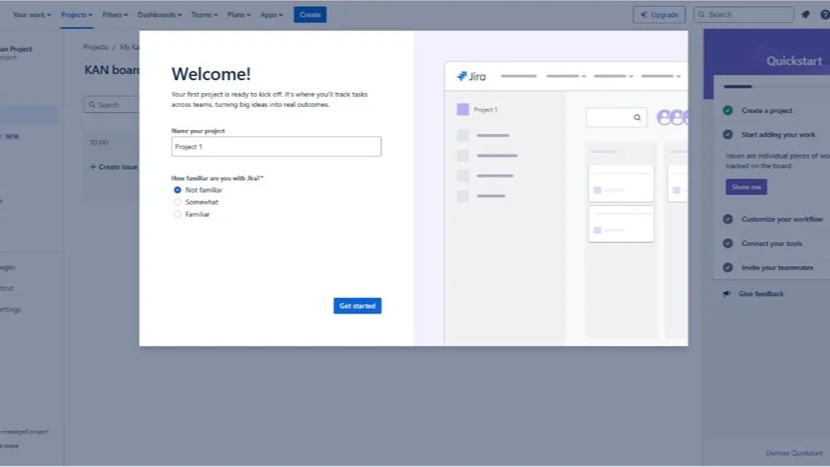The introduction to the Confluence Dashboard begins with understanding it as your central workspace. It’s the main hub where you find updates, general information, and navigation to all other areas. The dashboard helps teams collaborate efficiently and stay aligned. For new members, it’s the first point of contact — a space that sets the tone for teamwork. That’s why creating a clear, well-structured, and welcoming dashboard is essential for successful collaboration.
The Dashboard
The horizontal menu at the top left allows you to navigate through the different functions of Confluence:
- Home,
- Recent,
- Spaces,
- Teams,
- Apps,
- Templates and
- Create.
Clicking on ‘Home’ always takes you back to the dashboard.

Main menu: Recent
If you click on ‘Recent’ you will see your most recently edited posts. On the one hand you can search for certain keywords in the search bar. On the other hand the integrated menu allows you to choose between the options ‘All’, ‘Worked on’, ‘Created by me’, ‘Starred’, and ‘Drafts’. This allows you to navigate quickly and intuitively to your most recently edited posts.
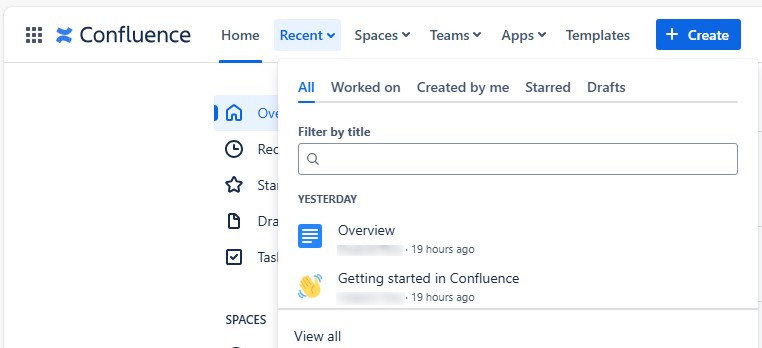
Main menu: Spaces
By clicking on the Spaces menu item, you can access your own spaces. When looking at the dashboard, the spaces are also displayed as another menu on the left. This function is therefore particularly useful when you are not moving around the dashboard. You can also create a new space using this menu item. And you will get an overview of all spaces.

Main menu: Teams
The menu item ‘Teams’ allows you to navigate to your teams. You can also invite people to your teams, create a new team and navigate to all teams. This menu item allows you to communicate quickly, especially in projects with many team members.

Main menu: Apps
The ‘Apps’ button allows you to navigate to the applications you use. You can also find new apps, manage your apps and request apps from your administrator.

***
The menu item ‘Template’ takes you to a page where you can select templates. ‘Create’ opens an empty post page for editing.
Menu bar top right
The menu bar at the top right contains the option to upgrade to a higher version of Confluence – if you haven’t already done so. It contains a search function that you can use to search within your own Confluence areas. You can also navigate to notifications, the help function and your own account functions.

Notifications
The Notifications menu item allows you to see all notifications at a glance.

Help
The help function allows you to access Confluence’s help pages directly. You can also get the latest news about changes and useful information here. NOT READY

Account settings
The icon with your initials allows direct access to account settings.

Menu bar left
The left menu contains the items ‘Overview’, ‘Recent’, ‘Starred’, ‘Drafts’, and ‘Tasks’:

Menu bar left: Overview
The menu item ‘Overview’ offers a comprehensive overview of what’s current within your Confluence world.
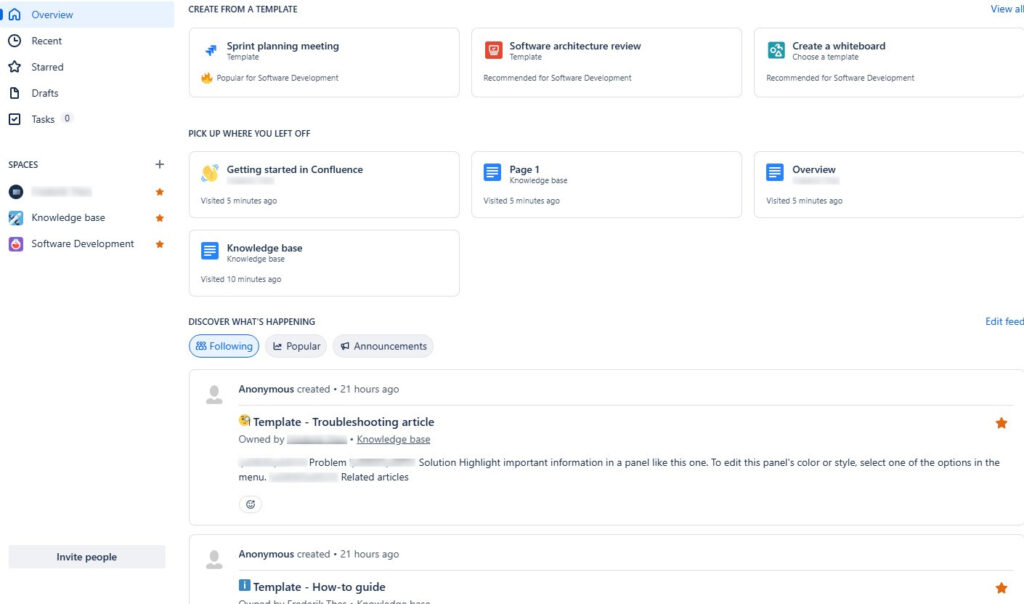
Menu bar left: Recent
Under ‘Recent’ you can search for recently edited pages and posts. You can view ‘All’, the ones ‘Worked on’ or the ones ‘Created by me’.
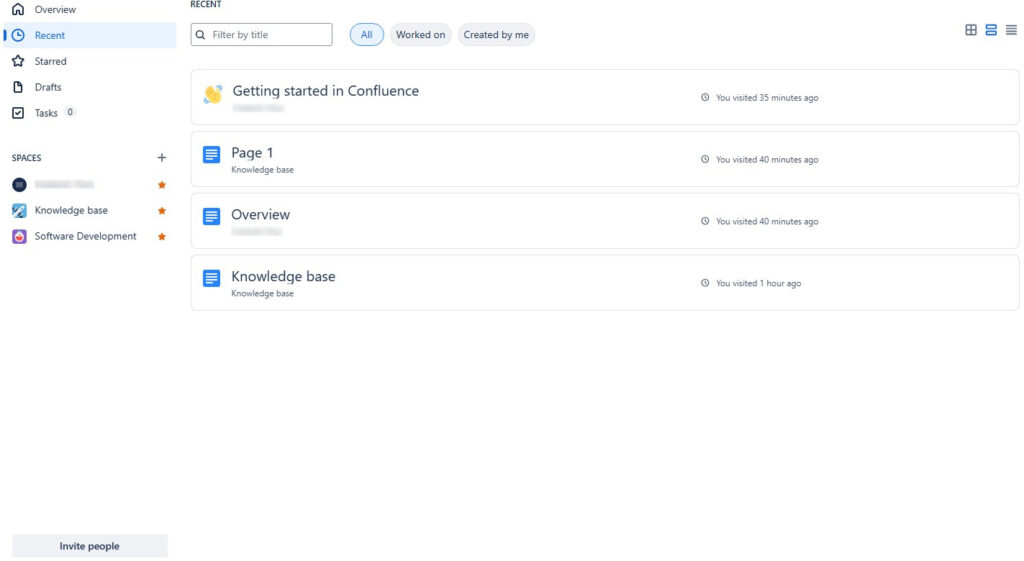
Menu bar left: Starred
Under ‘Starred’ you can find the posts and pages you are watching.

Menu bar left: Drafts
All current drafts are listed under ‘Drafts’.

Menu bar left: Tasks
‘Tasks’ lists all tasks assigned to you.
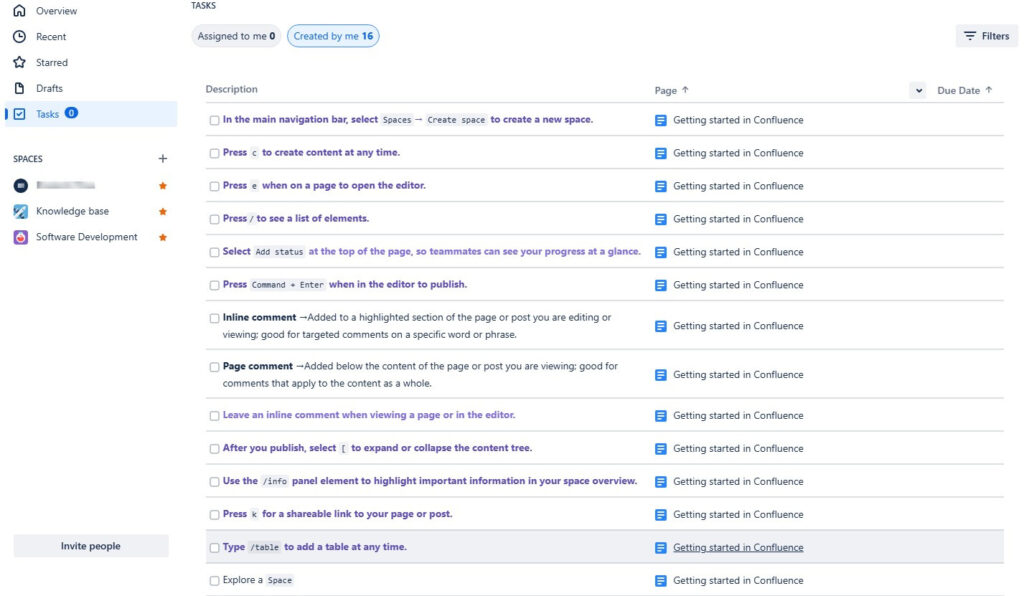
Conclusions: Introduction to the Confluence Dashboard
This introduction to the Confluence Dashboard shows what the Confluence Dashboard includes. You have learned where to navigate. The dashboard is just the starting point. Read the Tutorials and How to pages to learn how to use Confluence effectively.
What’s next?!
Now that you’ve mastered the introduction to the Confluence Dashboard, it’s time to take collaboration a step further. In my next article, How to Create a Jira Issue in a Confluence Page, I’ll show you how to seamlessly connect documentation and task management. Learn how to turn ideas, meeting notes, or project updates directly into actionable Jira issues — making your workflow faster, clearer, and more integrated than ever.


